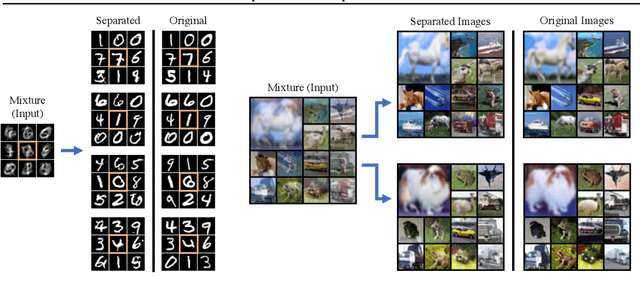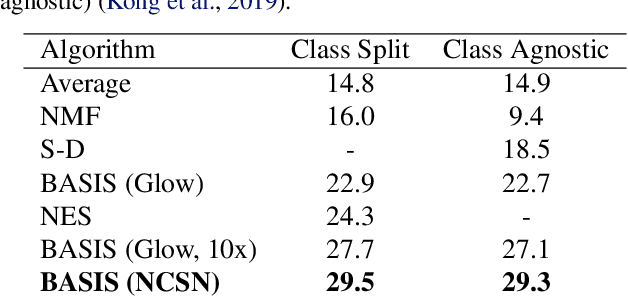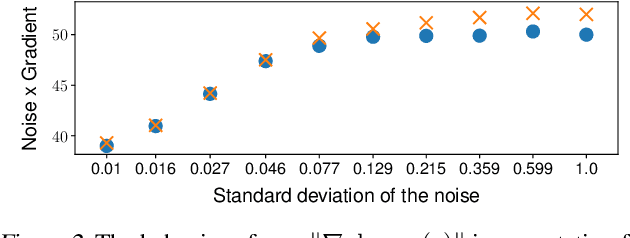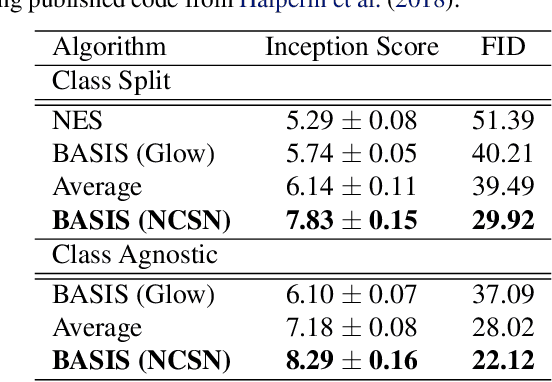Source Separation with Deep Generative Priors
Paper and Code
Feb 19, 2020



Despite substantial progress in signal source separation, results for richly structured data continue to contain perceptible artifacts. In contrast, recent deep generative models can produce authentic samples in a variety of domains that are indistinguishable from samples of the data distribution. This paper introduces a Bayesian approach to source separation that uses generative models as priors over the components of a mixture of sources, and Langevin dynamics to sample from the posterior distribution of sources given a mixture. This decouples the source separation problem from generative modeling, enabling us to directly use cutting-edge generative models as priors. The method achieves state-of-the-art performance for MNIST digit separation. We introduce new methodology for evaluating separation quality on richer datasets, providing quantitative evaluation of separation results on CIFAR-10. We also provide qualitative results on LSUN.
 Add to Chrome
Add to Chrome Add to Firefox
Add to Firefox Add to Edge
Add to Edge